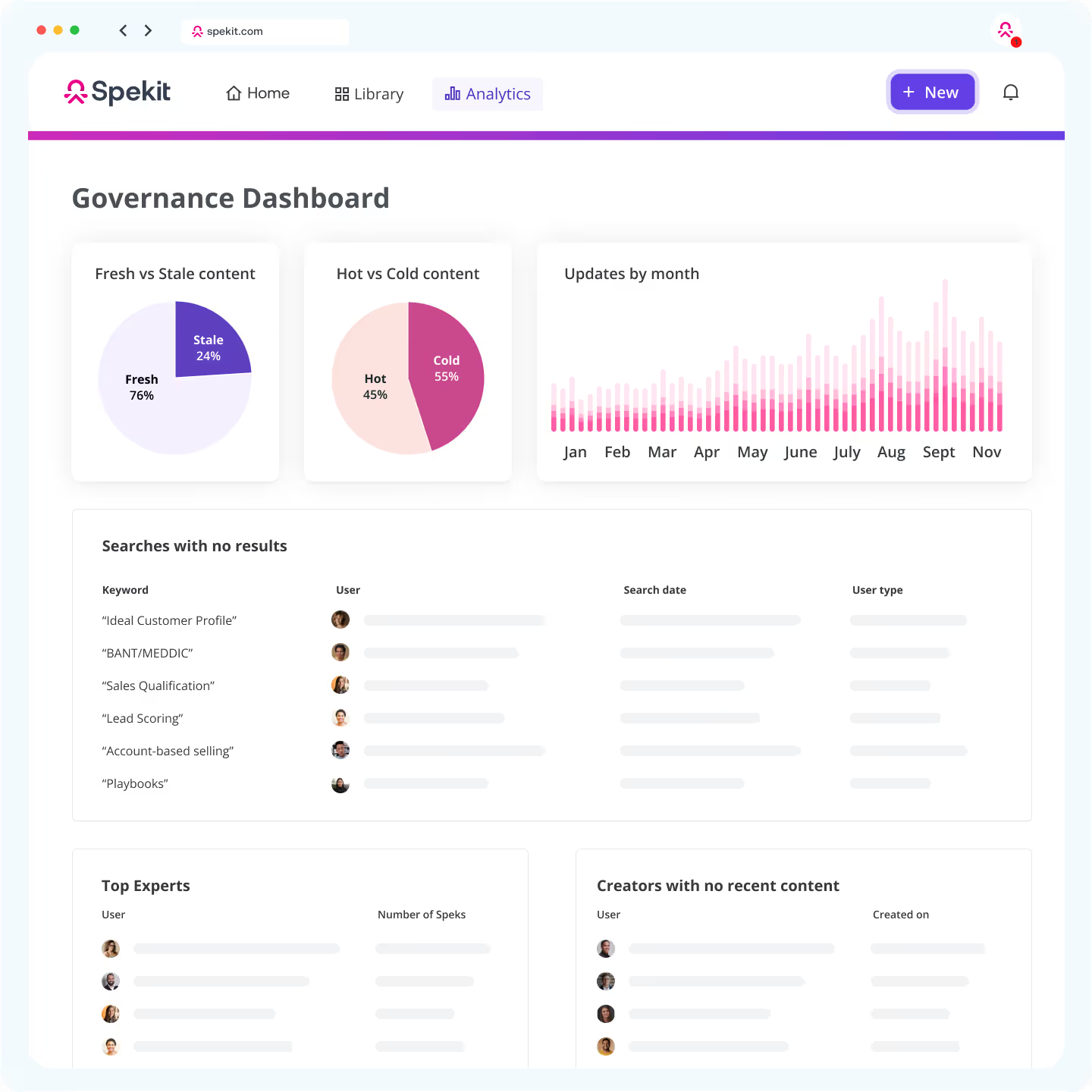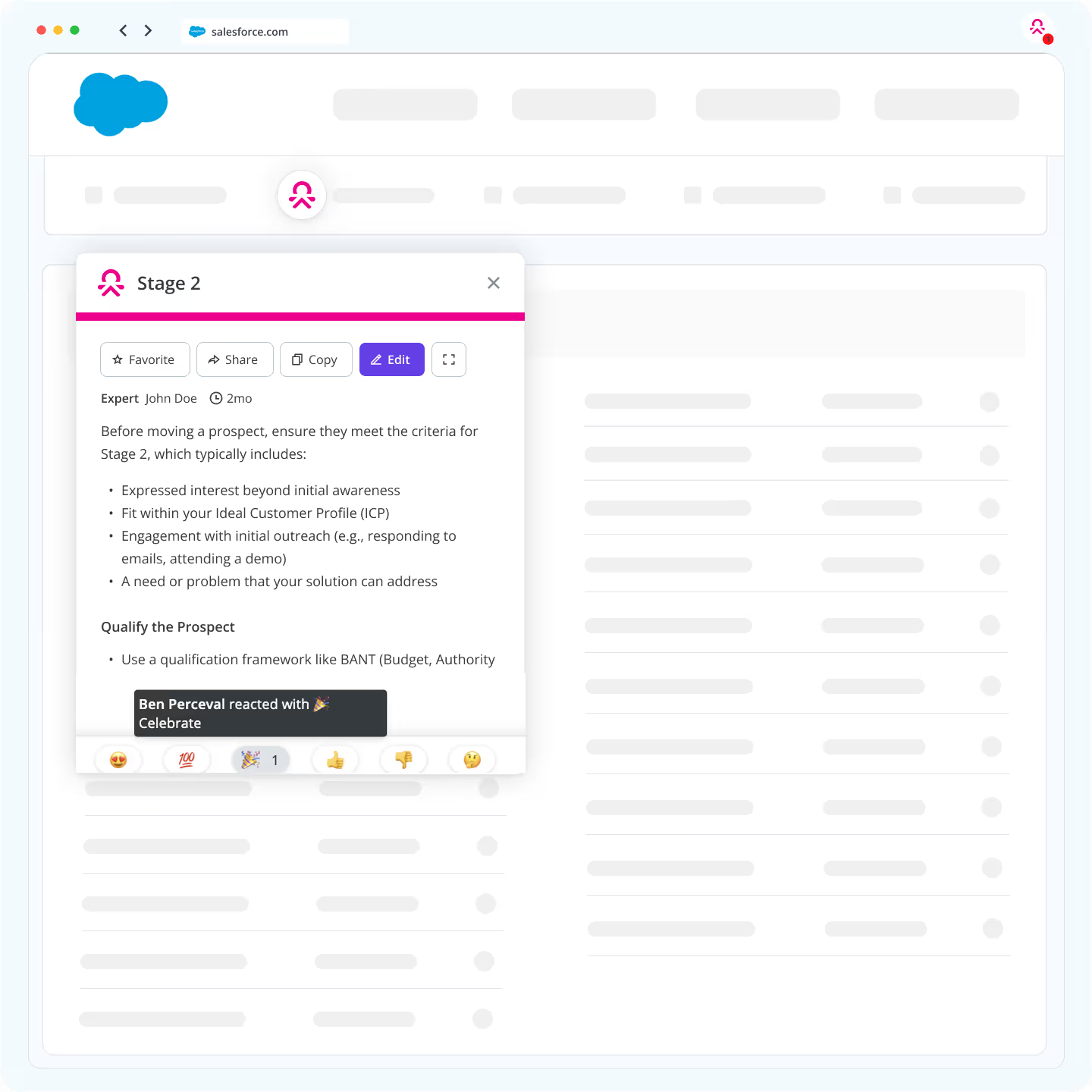Enablement analytics without the painful reports

Uncover gaps to uplevel your reps and fuel their success
Assess reps’ training consumption, comprehension, and application to identify knowledge gaps and growth opportunities.
Drive accountability with processes and best practices
Ensure reps review process updates and provide contextual guidance to drive efficiency and improve data hygiene.
Track top performing content to maximize impact
Tie content engagement to pipeline and ROI to multiply content impact.
.avif)
Measure engagement by team or user
Easily understand how sales reps interact with your content and the impact it has on their teams. Are they using the resources you develop? What content is most popular? Get those answers (and more) instantly.

Track pipeline and revenue impact
Connect to Salesforce to effortlessly identify top revenue-generating content and buyer engagement trends on what's resonating.

Assess understanding and retention
Measure how well employees understand and remember key concepts with instant Knowledge Check analytics. Review activity and performance data at the team or individual level to find what’s resonating and where reps need additional training.

Identify stale content easily
Get a comprehensive overview of content usage and freshness, so you can prioritize updates and content creation. Ensure reps always have the most up-to-date knowledge at their fingertips.

Get real-time feedback on your content
Get a pulse check on your content to quickly determine whether it’s resonating, or if there are areas for improvement. Get notified instantly whenever reps react to your content or submit feedback.

"Accountability is a HUGE piece for us and with the sales enablement analytics provided with Spekit we can hold staff accountable that they are reviewing the information and hold my team accountable that we are providing relevant, helpful content."

AI-powered enablement that works where your reps work
Instantly empower your reps with everything they need to succeed, at their fingertips, the moment they need it.

